Changing Color of a Light Olive Green Shirt
While it might not always be top of mind, the colors we wear can speak volumes–and even reveal aspects of our personalities to others! So, today, we've rounded up the most common associations to the colors of the rainbow, the grayscale, and everyone's favorite outlier, brown, to show how you can incorporate them appropriately into your outfits.
What The Colors You Wear Say About You
When assembling your outfit each day, there are a number of considerations to be made – the overall formality scale, seasonality, and what in particular you may have on your schedule. Equally important to these though are the colors you choose to incorporate as colors not only have the potential to affect the mood of others around you, but also to present aspects of your own personality.
Research by Keith Jacobs and Frank Hustmyer in 1974 has even shown that colors can even change our heart rate, blood pressure, and respiration.

Jacobs, K. W., & Hustmyer, F. E. (1974) Research Abstract
With that said, we believe a well-dressed gentleman should know about color psychology to form looks that communicate the right message and, of course, are pleasing to him and those around him!
Red
Positive associations for the color red include passion, love, romance, arousal, boldness, energy, willpower, confidence, persuasion, excitement, stimulation, leadership, and strength. Meanwhile, negative associations include danger, aggression, and riskiness.

Accessories in Shades of Red
Overall, red is a color that's highly charged with emotions, and boldness is the name of the game. With that in mind, try not to overdo how much red you're incorporating into your outfit or it will have the potential to look overly flashy.
If you wear a lot of red, chances are that you're energetic, strong-willed, and outspoken. You like to live life to the fullest and take risks more than other people might. You're also likely to be easily excitable and, perhaps, slightly self-centered.
Conversely, if you're hoping to get noticed more often, consider incorporating more red into your outfits as the science of optics tells us that red is often the first color to be noticed by the human eye. Stop signs are red for a reason, after all!
Multiple studies on the color red have shown that it can have various effects on behavior including that it can raise heart rate, affect your attention span, and make people who are wearing it seem more attractive.

As red tends to attract the eyes more, it's best to use it in moderation–like in a pair of gloves, for example!
Red pairs well with blue, pink, gray, and brown. Just make sure to use it in moderation and consider more muted shades like maroon as opposed to a bright true red.
Orange
The positive associations of orange include creativity, ambition, energy, sociability, friendliness, warmth, positivity, opportunity, youth, learning, abundance, and optimism. Negative associations include immaturity, divided attention, and tackiness.
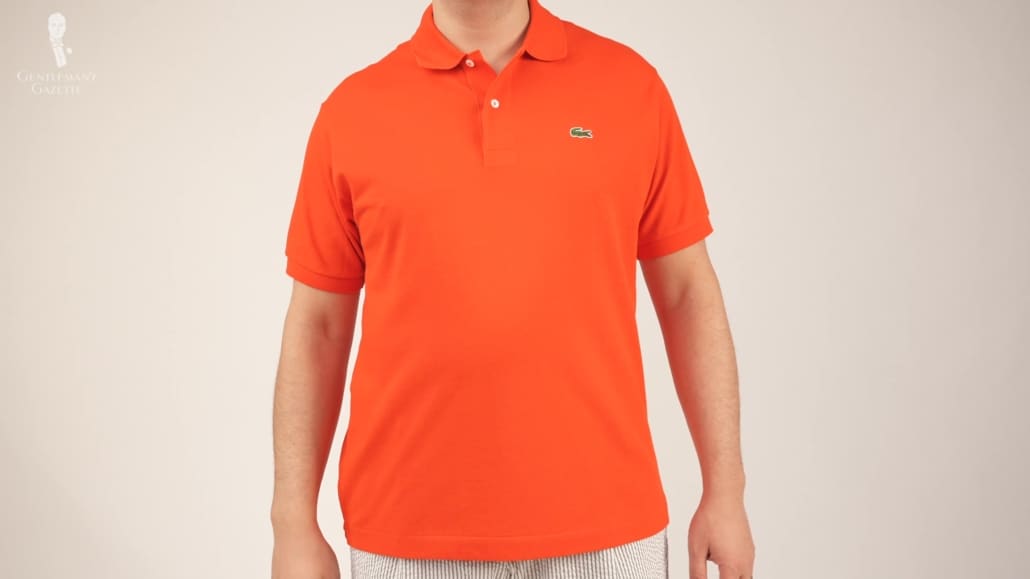
Just like red, use orange with discretion, or you'll look like an escaped convict.
Orange is something of a hit-or-miss color overall as wearing it can show that you're creative and ambitious. But, if you're wearing too much, you've got the potential to look like an escaped convict or a traffic cone. Similar to red, wearing more muted shades, whether those be pastel tones or darker shades, can soften these effects.
Orange draws in others for conversation or other social interactions, so it's a color that is good for extroverts and those who generally like to talk. Orange is also going to get you noticed, though not quite as readily as red will.
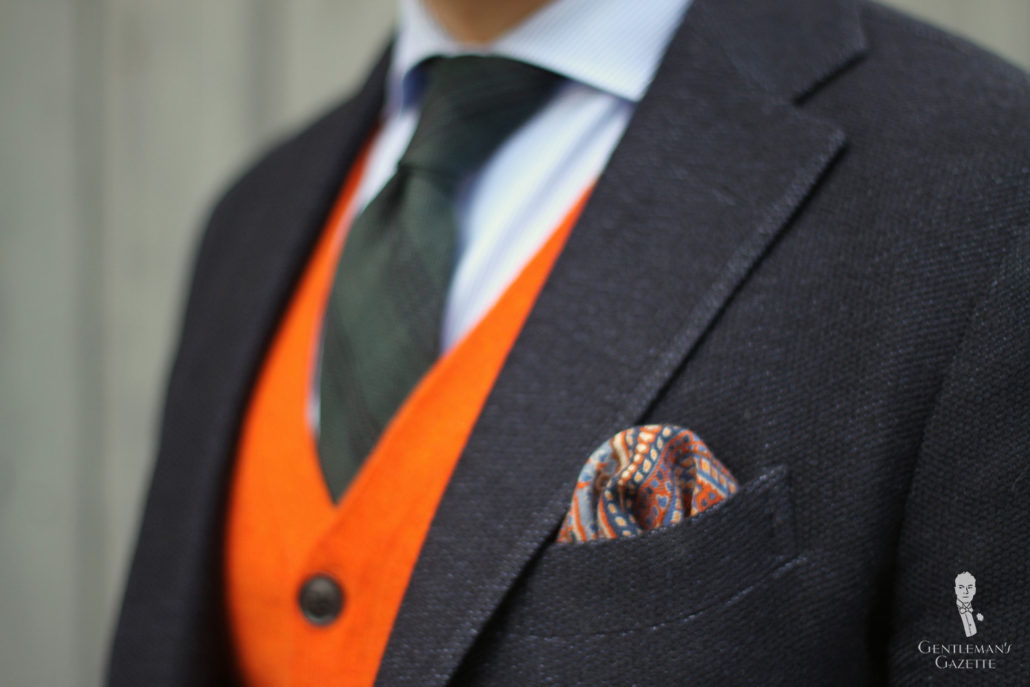
Know how to utilize the color Orange to make you look elegant and dapper.
Keep in mind, though, that despite its positive connotations, bold orange can put some people off as studies have shown that orange is many people's least favorite color, especially among women.
Orange pairs well with blue, black, gray, brown, and green. So, in other words, it's a great accent color against the staples of menswear.
Yellow
Yellow's positive associations include happiness, courage, sunshine, activity, creativity, excitement, alertness, and an overall casual quality. Meanwhile, negative associations include immaturity, addiction, and fear.

Raphael wearing a mustard yellow TV jacket and windowpane trousers
In general, wearing yellow will contribute to a happy, fun, and positive mood overall. It is the color of sunshine and, accordingly, it has the potential to lift everyone up.
Studies have shown that this "mood-lifting" is partly contributed to by the increased production of serotonin in the brain when observing the color yellow, and it also has the potential to raise people's metabolism. Yellow also improves concentration, which is why you see it on billboards, street signs, legal pads, and highlighters.
Similar to red and orange, the other warm colors, yellow is also best used in moderation and in lighter or darker shades. Yellow is also a color that can communicate fear. So, if you're naturally timid or shy, you may want to avoid it or wear it only in small doses.
It's great for casual wear, weekends, and the warmer months of the year. And it pairs well with gray, green, and brown in particular.
Green
In the next slot is green, whose positive associations include freshness, relaxation, comfort, recognition, care, sociability, money and finance, nature, charisma, trustworthiness, creativity, balance, healing, and generosity. Its negative associations include mystery, envy, rigidity, and stagnation.
Green is a color that is easy on the eyes and on the mind. So, if you find yourself wearing green regularly, there's a chance that you want to be well-liked and recognized.
Green is said to produce the least amount of eye strain when exposed to it for long periods of time and researchers at the University of Amsterdam have found that seeing green keeps people in a good mood overall.
A study published in the Personality and Social Psychology Bulletin also found that green can stimulate creativity. When researchers exposed participants in a study to the color green before they began working on a creative task, the researchers found that the creativity of the participants increased.
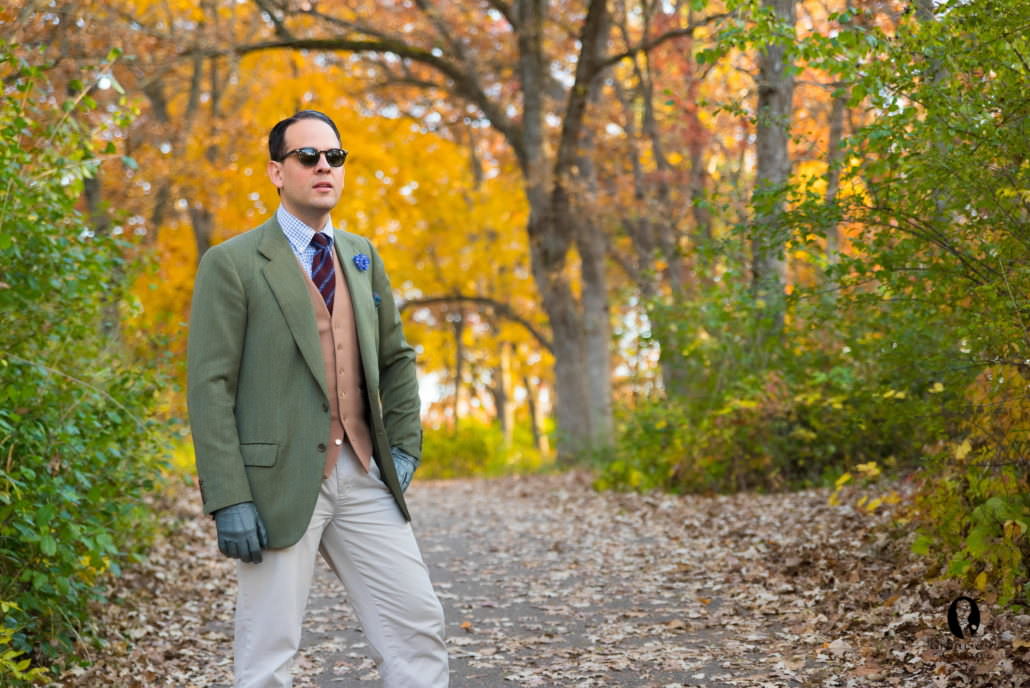
Green, being the color of nature, is easy on the eyes and connotes a sense of calm.
Obviously, green is also commonly associated with nature, so it can have a grounding and calming effect that way as well. Green is also associated with the military and wearing olive drab, in particular, can give you the impression of being a rule follower or especially rigid in personality.
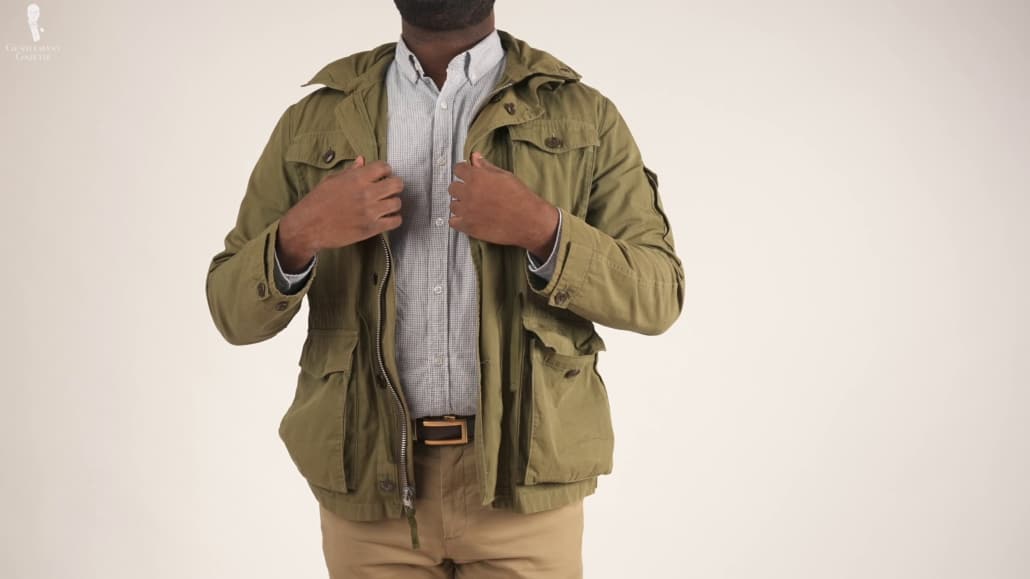
Greenfield jacket in a muted green shade with an off-white button-down shirt, and chino pants.
When it comes to combinations, g reen pairs well with yellow, brown, and gray.
Blue
Blue is a true menswear staple, whose positive associations include friendliness, loyalty, positivity, confidence, calm, honesty, trustworthiness, peace, intelligence, efficiency, success, control, kindness, sympathy, independence, truth, and wisdom. There are comparatively few negative associations here, but those most commonly reported are shyness and coldness.
Overall, blue is a soothing color that will make those around you feel more comfortable.
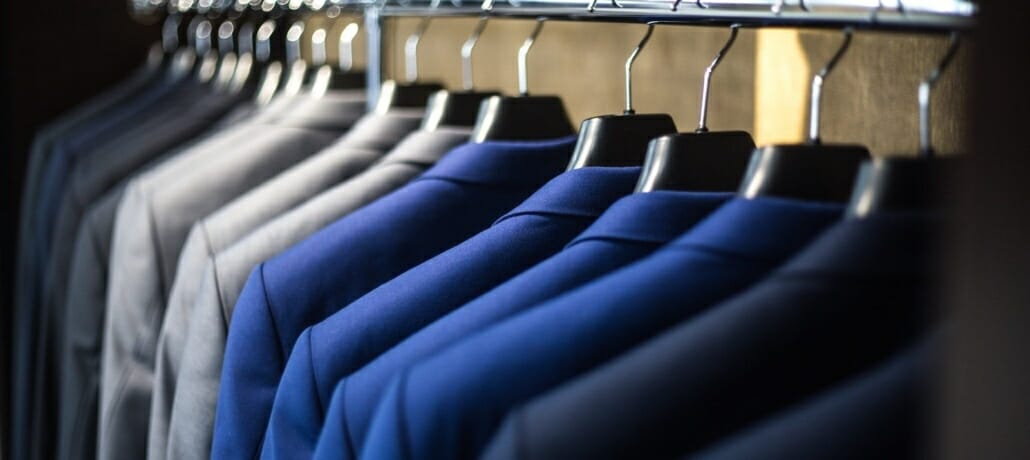
Suit jackets in various shades of blue.
Research from the University of British Columbia, among other institutions, has also found that darker hues like navy blue can increase the production of calming hormones like oxytocin in the brain and that people feel safer exploring their ideas when they're surrounded by blue.
Blue can often give its wearer a sense of being in control. So, it's a particularly good choice for job interviews or other corporate events.
Blue pairs well with brown, pink, red, and orange, but as we've mentioned in numerous other guides, it can be considered a neutral in menswear and can really pair with many other colors.
Purple (Violet)
Purple is also called violet and its positive associations include leadership, sophistication, wealth, luxury, creativity, charm, insight, confidence, imagination, sentimentality, and spirituality. Its negative associations, meanwhile, include intimidation, unpredictability, sensitivity, shyness, and introversion.

King George VI of England wearing purple in his vestments.
As we've discussed in our previous guide on wearing and pairing purple, rulers throughout history wore purple in their robes and other vestments. So, you can tap into some of this regal power by putting purple into your outfits. Purple projects confidence in its wearer but, on the flip side, others may also find purple a bit intimidating subconsciously.
When choosing a pairing for p urple, the grayscale – white, gray, and black – as well as brown, red, and blue hues you can consider.

Preston wearing a purple sweater, stripe shirt, and gray pants.
Pink
Coming to the end of the rainbow now, let's talk about pink, whose positive associations include sincerity, love, romance, optimism, sophistication, comfort, affection, nurturing, kindness, and calm. Negative associations for pink include vulnerability and weakness.
To get the most obvious point out of the way first, pink isn't "just for girls!" It can, of course, be worn by anyone. Up until the mid-20th century, pink was actually a common color for young boys and it used to be associated with Mars, the Roman God of War.

In a 1955 spread, pink was featured as a staple color for men.
The color pink may also have powerful effects on mood and emotional health as well. In fact, in the 1970s, psychologist Alexander Schauss found that prison inmates, who stared at walls and ceilings painted in pink, reported a decreased level of aggression overall.
Pink is generally a well-liked color by society. And as such, it's often used in marketing initiatives. You can think of breast cancer awareness or the Millennial pink wave of 2017 as examples.

A pink shirt pairs especially well with a charcoal gray suit.
Pink pairs well with red, yellow, green, blue, gray, and teal, which, of course, is a combination of green and blue.
White
Let's get into the grayscale, beginning with white. The positive associations here include confidence, perfection, balance, innocence, purity, simplicity, optimism, positivity, courage, reliability, and freedom. The negative associations for white include perfectionism and sterility.
Given that white is commonly associated with things like freedom, purity, and simplicity, this is why many people often buy things in white, especially things like furniture when turning over to a new chapter in their lives.
White is a neutral color or, really, the absence of color. And thus, it can be worn by many different personality types as it is in essence a blank canvas. In addition to helping you appear clean and innocent, white can also give the impression that you're well-organized and in control of things.
Too much white can have the potential to wash you out, however, so we'd suggest pairing it with other colors in your ensemble. White pairs well with gray, blue, brown, purple, and red. In another post, we tackled how to wear its close sibling, off-white.
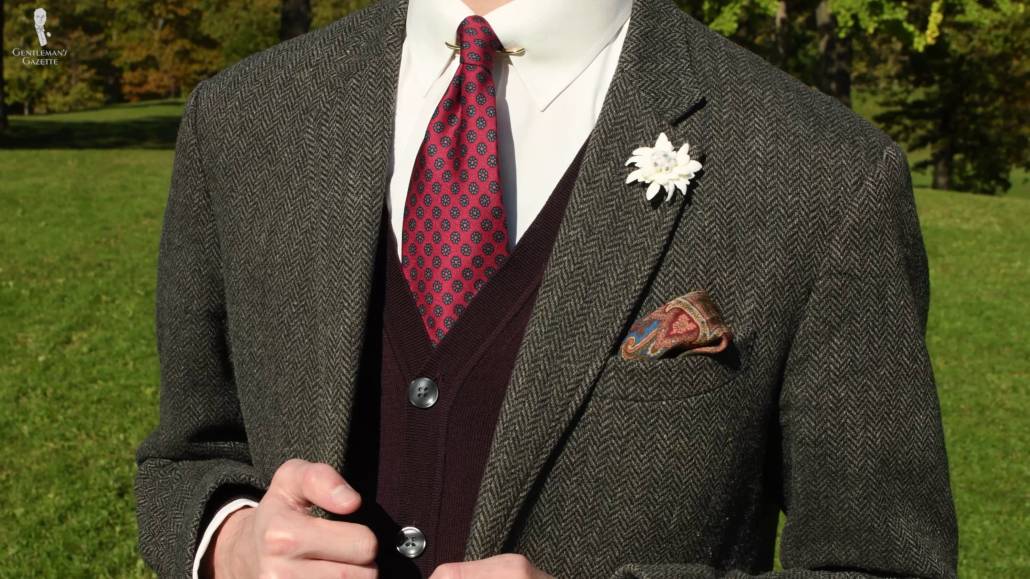
For layers, you can pair a tweed sport coat and a sweater or cardigan with a touch of red along with your white shirt.
Gray (Grey)
As you might have guessed, gray is up next. Positive associations here include balance, neutrality, sophistication, tranquility, maturity, and composure. Meanwhile, negative associations include blandness, conformity, coldness, sterility, and apathy.
Another staple neutral shade in menswear, gray is a classic that will have you looking organized and reliable. If you find that your closet is full of gray, break up the monotony of those "groutfits" by incorporating other colors to spice things up.

A gray suit style in a birdseye weave with a Winchester shirt with a very subtle herringbone pattern and a blue body.
While those who wear a lot of grays generally prefer not to draw too much attention to themselves, wearing an excess of grey can actually suppress your mood, in addition to washing you out visually.
Darker charcoal grays can make a more powerful assertive statement. Whereas, lighter grays are more nonchalant. Gray pairs well with pink, black, white, red, and blue. It can also go well with brown. If you want to learn more about maximizing the classic color, you can consult our guide to wearing gray.
Black
Let's round out the grayscale with black, whose positive associations include sophistication, strength, power, authority, formality, elegance, luxury, intelligence, and efficiency. Black does also have a number of negative associations as well including coldness, harshness, depression, aggression, mystery, death, and mourning.
Black is a go-to for many people, of course, but it does have the potential to be overpowering and it can wash out many skin tones. As we mentioned for both white and gray, adding some pops of color can soften the look overall.
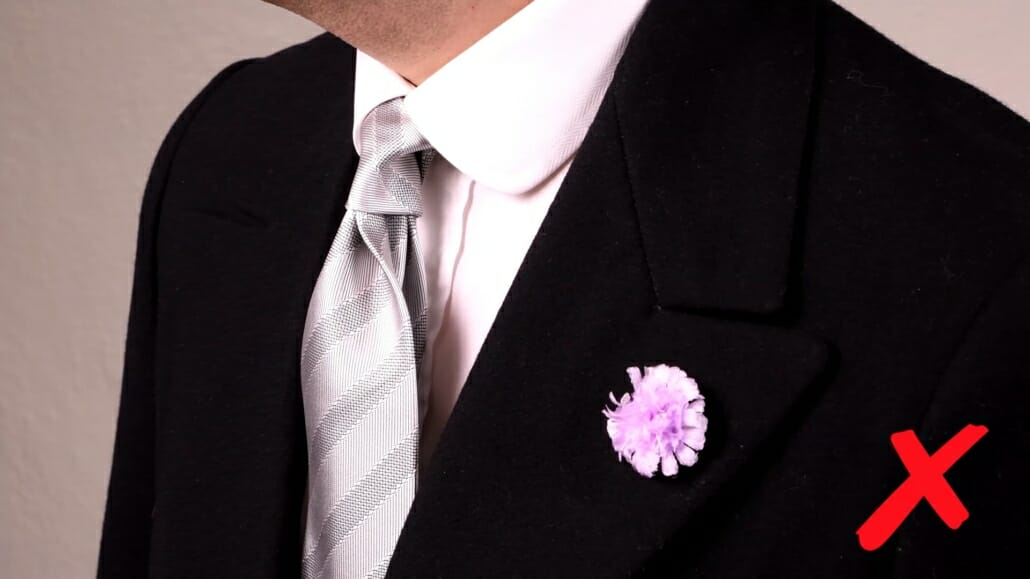
Do not wear a black jacket with a white shirt if you have a light skin tone
Black is also well-loved for its ability to slim down your frame a bit, should that be of interest to you. But, there are other ways of accomplishing this as you can find in our guide to dressing leaner and taller.
People who wear a lot of black clothing are generally ambitious and purposeful, but they can also be sensitive. They can be emotional and easily excitable as well, though they may try to hide it more than wearers of red would for example.
Reinforcing the negative association between black and aggression, research at the University of Florida found that hockey players wearing black jerseys were more likely to be penalized for aggressive physical contact than players wearing white jerseys.
Black pairs well with its grayscale companions gray and white, as well as red. It's also great for formal occasions. Just think of the Black Tie and White Tie dress codes for example.
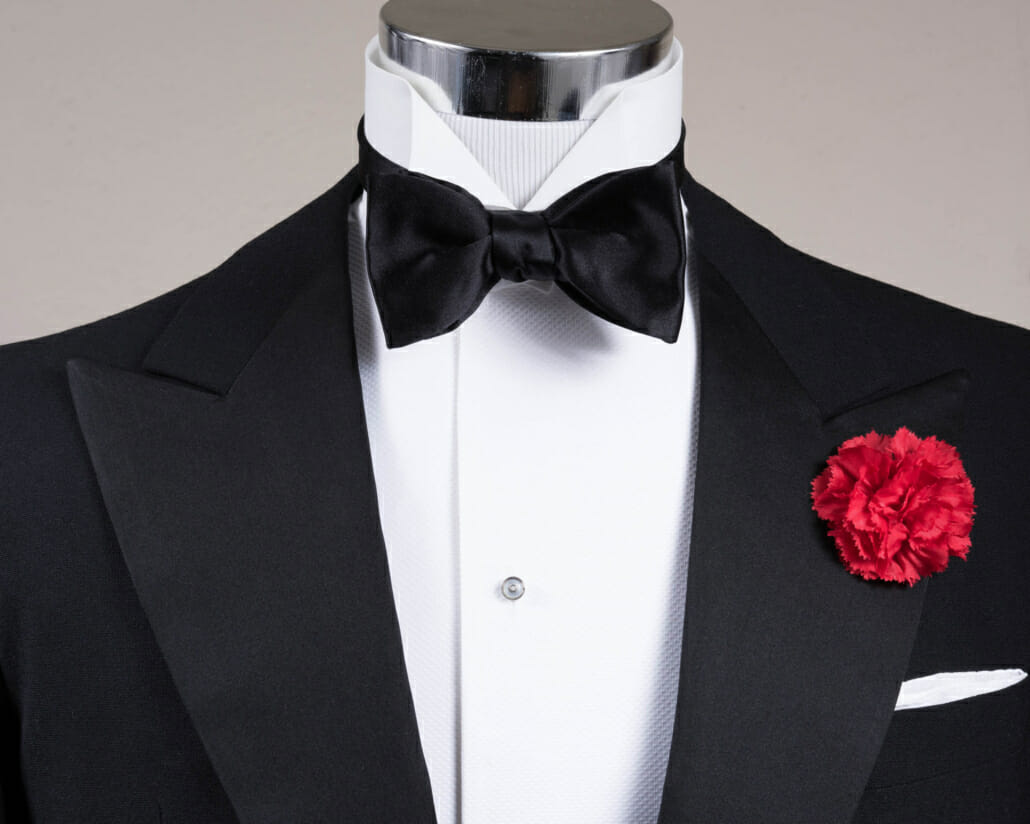
Black is a staple for formal occasions, such as a Black Tie event.
Overall, though, we find black to be mostly overrated. Furthermore, a black suit isn't as versatile as you might think.
Brown
To wrap things up today, we've, of course, got one more color to discuss, which is brown. Its positive associations include commitment, reliability, stability, ruggedness, nature, intelligence, and respect. Meanwhile, its negative associations include blandness and conformity.
Brown is the color of earth and, similarly to green, is also well-represented in nature. And as such, it is seen as another grounding, centering color.
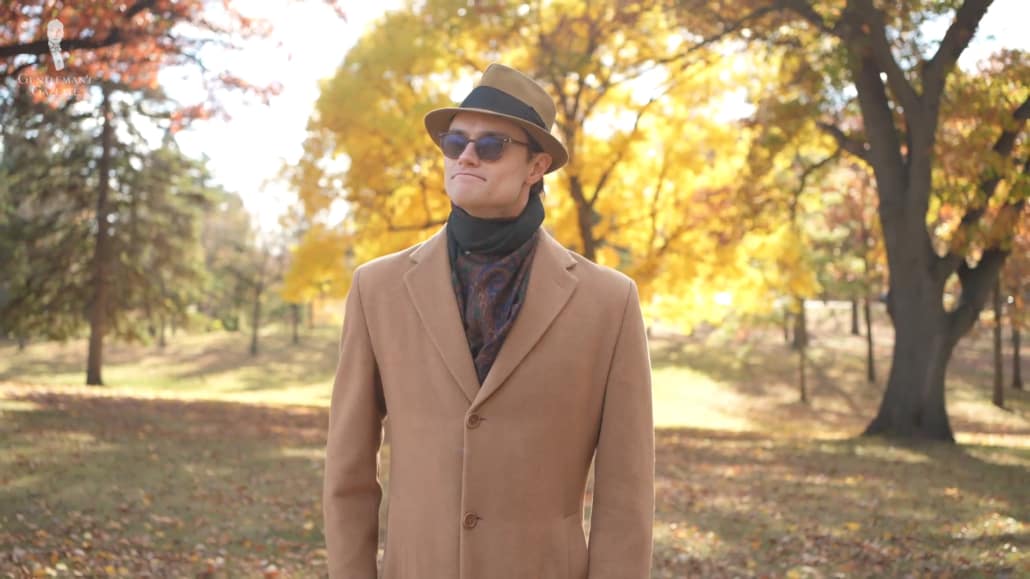
As a neutral color, brown is a versatile ground for just about any accent color you prefer.
Wearers of brown are seen to be dependable, smart, and rational. And they're less likely to rush into things, preferring to consider their options sensibly. Wearers of brown are more likely to take a conservative approach to things, respect their elders, and seek out peace and stability as well as providing it to others.
Since brown is another neutral hue and it doesn't communicate any strong or heightened emotions, it has also been shown to promote more effective communication between parties.
Brown can be a bit bland in some circumstances though, so adding a pop of color here or there may also be a good idea. In general, there actually isn't a color that brown doesn't pair well with, including all of the colors we've discussed today. And, of course, there are multiple shades of brown as well – everything from buffs and tans to deep chocolate and charcoal browns.
Conversely to black, we find brown to be vastly underrated in menswear.
Conclusion
Hopefully, you have learned a bit more today about why you naturally gravitate towards certain colors and have gotten some inspiration about which ones you'd like to incorporate more of into your wardrobe.

The colors you wear can influence your mood, as well as the moods of people around you.
Overall, you've got two basic ways to think about leveraging color in your outfits. You can either choose colors based upon the mood you're in already or you can choose colors based upon the mood you'd like to be in.
Also, be sure to consider how well the colors you're choosing harmonize with your skin tone, eye color, and hair color. One more reminder here is to check out our website for guides on colors and patterns, how to use the color wheel to assemble superior outfits and how to incorporate three or more colors into a single outfit.
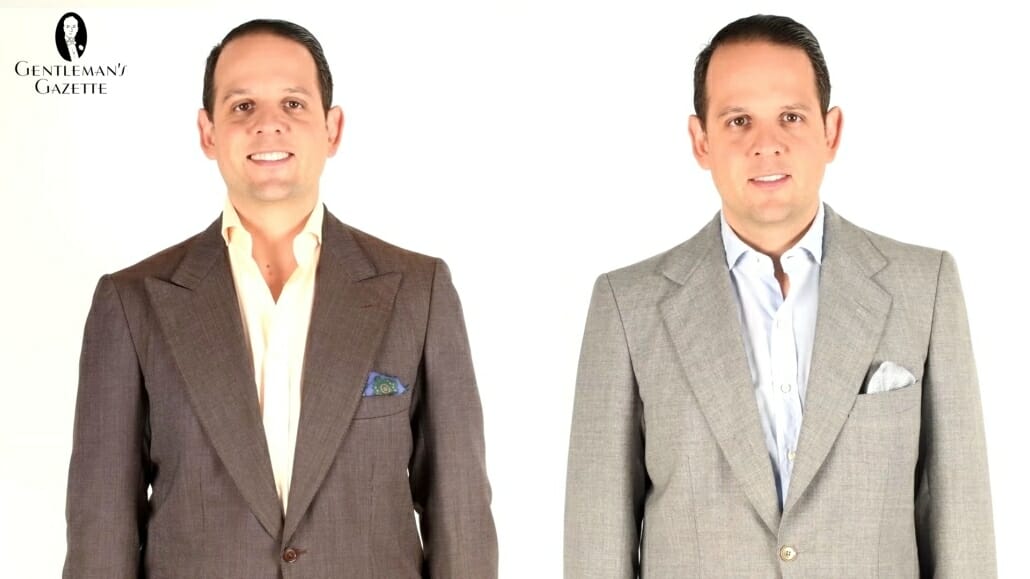
The ensemble on the left complements Raphael's natural tones, whereas the look on the right is more washed out.
On that note, though, keep in mind that the more colors you incorporate into one outfit, the more subconscious emotional signals you have the potential to be sending. So, we'd encourage you to have fun and experiment, but be mindful of just how you might be "coloring" other people's thinking!
What's your favorite color or colors to wear, and why? Share them in the comments section!
Changing Color of a Light Olive Green Shirt
Source: https://www.gentlemansgazette.com/what-colors-say-about-you/